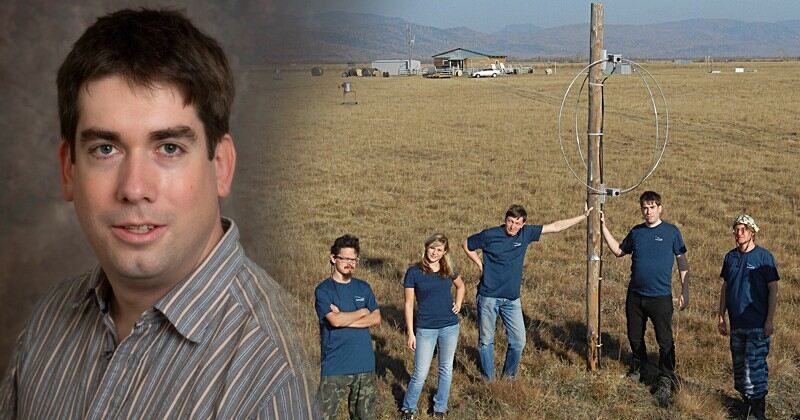“A Sloan Research Fellow is a rising star, plain and simple” said Adam F. Falk, president of the Alfred P. Sloan Foundation. “To receive a Fellowship is to be told by the scientific community that your achievements as a young scholar are already driving the research frontier.”
Schroeder, who joined the UD faculty in 2018, will use the two-year, $75,000 fellowship to continue his research on a galactic mystery. He wants to uncover the origins of cosmic rays — nature’s highest-energy particles, which hurtle through space at nearly the speed of light. His quest has taken him to some of the most remote locations on Earth, including Siberia and the South Pole, to set up scientific instruments to detect these powerful particles.
“Frank is clearly destined to be a future leader in the important field of astroparticle physics and, in many notable ways, has already achieved that status,” said Jamie Holder, professor in the UD Department of Physics and Astronomy and director of the Bartol Research Institute, in his letter nominating Schroeder for the fellowship.
As Holder explained, scientists are able to study cosmic rays from the ground, thanks to the particle showers that occur when they interact in Earth’s atmosphere. These cascades of particles produce different types of electromagnetic radiation, including in the radio region of the spectrum. Although this radio emission was discovered over 50 years ago, early attempts to use it as a tool for detecting cosmic rays suffered from the limitations of the analog electronics available at that time.
“Frank has been at the forefront of recent efforts to revisit radio detection using modern digital electronics and signal processing techniques,” Holder said. “He has shown definitively that radio provides a powerful new tool to study cosmic rays, and that the information it provides complements and enhances existing methods.”
Schroeder’s research already has sparked the installation of radio antennas and other upgrades that are now in progress at major cosmic ray observatories such as the Pierre Auger Observatory in Argentina and IceCube at the South Pole, where he is a leading research contributor.
Previously, Schroeder led a collaboration of German and Russian scientists in constructing an array of radio detectors in Siberia. Their successful Tunka-Rex experiment provided evidence that arrays of radio antennas can measure the depth at which the cosmic-ray particle showers develop in the atmosphere. This is a key parameter for measuring the mass composition of cosmic rays and for testing scenarios of their origin. Schroeder was awarded the 2017 Young Scientist Prize from the International Union of Pure and Applied Physics Commission on Astroparticle Physics for this work.
Since joining UD, Schroeder has won a major grant from the European Research Council and is a co-investigator on an Established Program to Stimulate Competitive Research (EPSCoR) project, involving scientists from Alabama, Alaska, Delaware, Kansas, Nebraska and South Dakota in developing big data applications for analyzing the massive amounts of data from astroparticle observatories, such as IceCube.
Honoring “extraordinary U.S. and Canadian researchers whose creativity, innovation and research accomplishments make them stand out as the next generation of scientific leaders,” the Sloan Research Fellowship is open to scholars in eight scientific and technical fields — chemistry, computational and evolutionary molecular biology, computer science, Earth system science, economics, mathematics, neuroscience and physics.
The fellowships are awarded in close coordination with the scientific community. Candidates must be nominated by their fellow scientists, and winners are selected by independent panels of senior scholars on the basis of a candidate’s research accomplishments, creativity and potential to become a leader in his or her field. More than 1,000 researchers are nominated each year for 128 fellowship slots.
Schroeder is the eighth UD faculty member to receive the honor since the first Sloan Research Fellowships were awarded in 1955.


